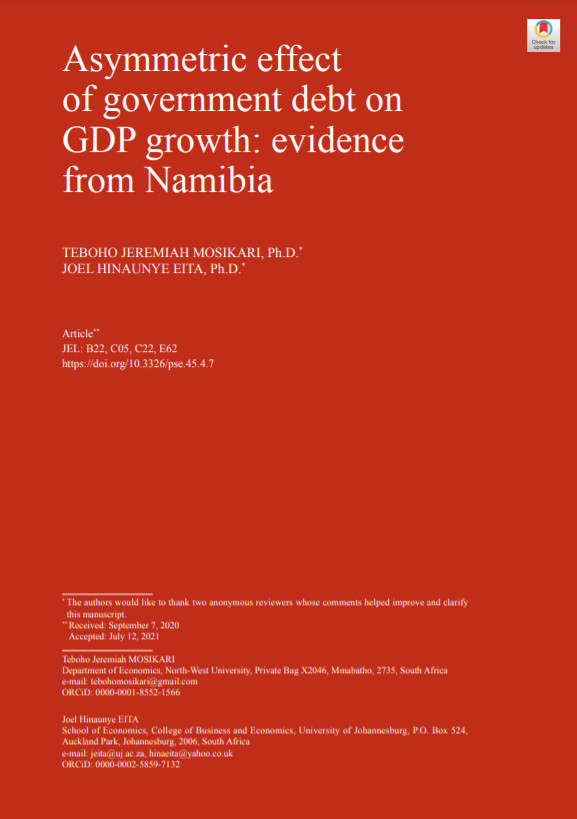Asymmetric effect of government debt on GDP growth: evidence from Namibia
DOI:
https://doi.org/10.3326/pse.45.4.7Keywords:
government debt, economic growth, nonlinear, fiscal policy, NamibiaAbstract
This study investigates the asymmetric relationship between government debt and GDP growth in Namibia. The study applied the non-linear autoregressive distributed lag (NARDL) methods to determine the asymmetrical effect of government debt on GDP growth. The estimated long-run parameters for positive and negative shocks of government debt are -0.104 and -0.738, respectively. The results suggest that a 1% increase in debt will be followed by a 0.104 decrease in GDP growth and that a 1% decrease in debt will produce a 0.738 increase in economic growth. This shows that the responsiveness of GDP growth to positive values of debt is different to that of negative values of debt. The responsiveness of GDP growth to negative values of debt is greater than to positive value of debt. This implies that it is important for Namibia to have manageable debt and fiscal sustainability in order to increase its GDP growth.

Downloads
Published
How to Cite
Issue
Section
License
Copyright (c) 2021 Teboho Mosikari, Joel Hinaunye Eita

This work is licensed under a Creative Commons Attribution-NonCommercial 4.0 International License.








